Brooklyn, NY 11217


Charles P. Stevenson Library
Bard College, Annandale-on-Hudson, NY 12504
In 1944 David Stone Martin (1913-1992) was an artist on the rise. A veteran of the art division of the Tennessee Valley Authority and an acclaimed New Deal mural painter, he was just beginning an independent career in illustration and commercial design. Mary Lou Williams (1910–1981) was already famous. After more than a decade on the road, the popular piano player, composer and arranger of Andy Kirk's swing orchestra was embarking on a solo career in New York City. David was charming, fun and a gifted artist; Mary, attractive, stylish, and a musical prodigy, was his perfect counterpoint. Their affair lasted less than a year but their connection remained lifelong. She helped him get his start as an illustrator of record albums -- the field in which he made his fame and fortune. He in turn created some of his most memorable record covers for her. Equal parts art, music and love -- each work in this exhibition can be seen as a collaboration between the two artists.

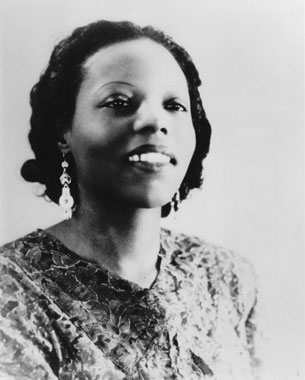
Mary Lou Williams and David Stone Martin met at Café Society, the famous Greenwich Village nightclub where jazz, blues, gospel, satiric comedy, art, and leftist politics were all part of the show. Launched in 1938 by Barney Josephson, the club provocatively billed itself as "the right place for the wrong people." It was the first club in New York with integrated audiences as well as racially mixed stage shows. Every night during Café Society's first year, Billie Holiday closed her show with "Strange Fruit," a song about lynching specially written for her booking at the club. Williams started at Café Society in 1943 and soon became a star attraction playing lively swing and boogie-woogie. Martin was a club regular with an art studio conveniently located nearby. He rented a piano for the studio, and while Mary played and composed, David painted.
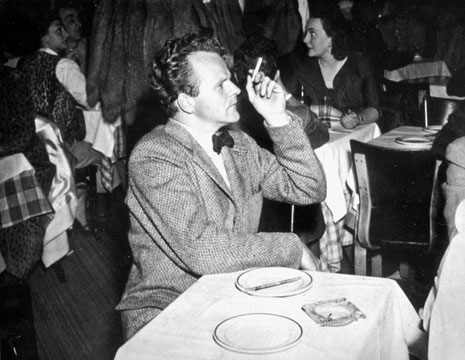
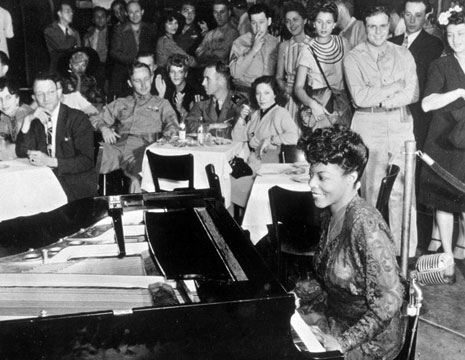
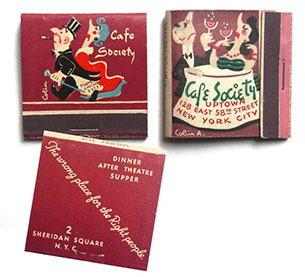
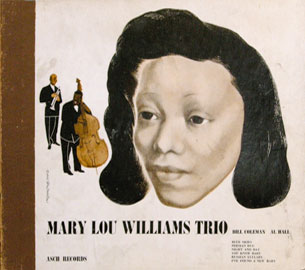
This is the first cover that Martin made for Williams. In the 1940s record albums contained three or four 78 rpm records.
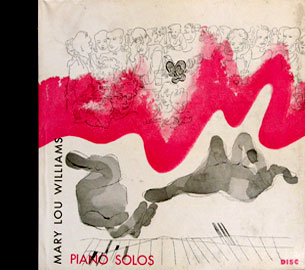
Martin uses shapes and color to convey sound. Café Society is in the background.
Mary Lou Williams' first recordings under her own name in the 1940s were for Asch Records and the Disc Company of America, two small labels run by the maverick Moe Asch. Like Barney Josephson at Café Society, Asch was a political leftist who sought out music that he believed reflected the authentic voice of the people. His eclectic roster included Leadbelly, Josh White, Woody Guthrie, Pete Seeger, the Calypso singer Lord Invader, and Norman Granz's live recordings of his Jazz at the Philharmonic concerts. Asch was one of the first to understand the importance of packaging in selling records. When Williams introduced him to Martin he recognized a major talent and hired him as his label's art director. The relationship lasted until 1949 when Disc went bankrupt. Martin then teamed up with Norman Granz, whose success over the next two decades helped Martin gain world-wide recognition as a top album-cover designer.
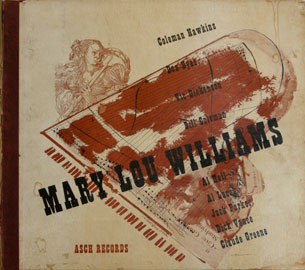
This bigger 12-inch-size 78 rpm record album allowed for longer songs.
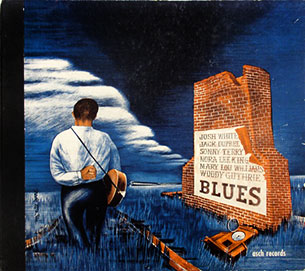
This album contains a sampling of the recording artists at Asch Records. Josh White worked with Williams at Café Society.
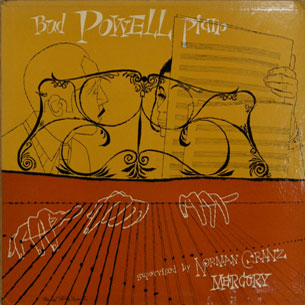
Few people notice the partially hidden portrait of Mary Lou Williams on the cover of this Bud Powell record. Williams provided both emotional and musical support for the fragile Powell who was in-and-out of mental institutions in the late 1940s. This 10-inch album was for the new 33 rpm records that became popular in the 1950s.
Mary Lou Williams was a musical wonder who first began playing the piano at the age of four. Over a long career she perfected almost every style of popular music – vaudeville, swing, boogie-woogie, bop and even symphonic jazz. The 1960s brought changes in both Williams’ life and music. First came her conversion to Catholicism and the decision to devote herself to good works. Her music followed suit and included a jazz mass and compositions honoring Dr. Martin Luther King Jr. Wanting to function outside the commercial mainstream, the entrepreneurial Williams started Mary Records as a way to get her musical message out. David Stone Martin offered help, providing art for her album covers and posters supporting Williams' campaign to keep the spirit of jazz alive in the black community.
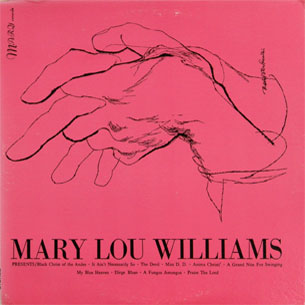
This was Williams' first album of religious music following her conversion to Catholicism.

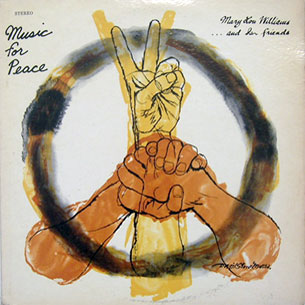

At a time when it was being increasingly marginalized by rock and roll, Williams actively campaigned to teach black children about the importance of jazz.
Curator: Marc H. Miller
Editing: Katherine Jánszky Michaelsen
Design: Haoyan of America
For more information about Mary Lou Williams:
Mary Lou Williams Foundation
Mary Lou Williams Collection at the Institute of Jazz Studies

A visual journey through New York's art and music underground, as experienced by an artist, writer and curator living in the top floor loft at 98 Bowery from 1969–1989.

The online store for the website 98bowery.com featuring original art and ephemera from 1975 to 1985 connected to the artist group COLAB, and the galleries Fashion Moda and ABC No Rio.